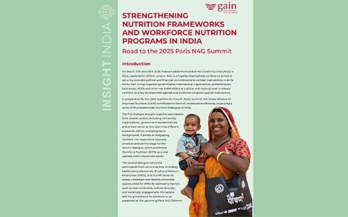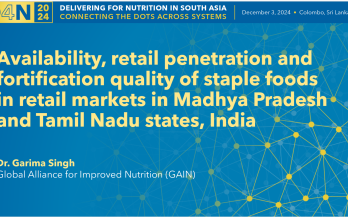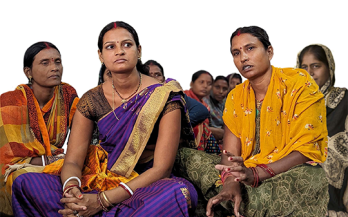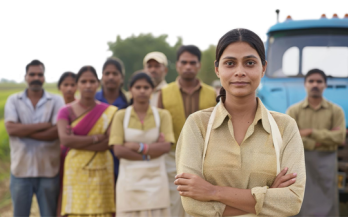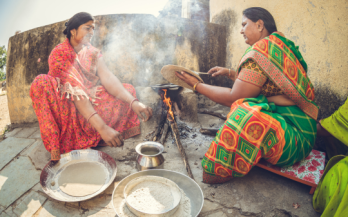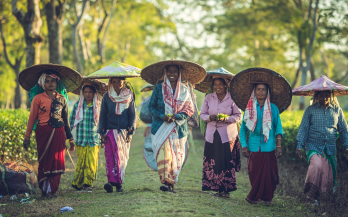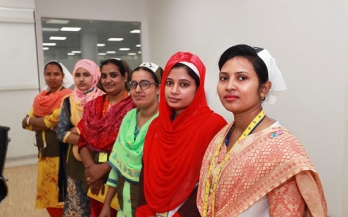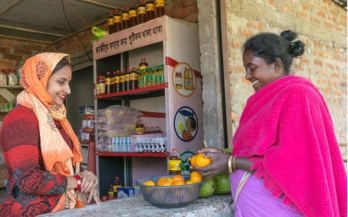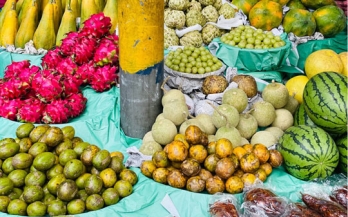On March 27th and 28th, 2025, France hosted the Nutrition for Growth Summit (N4G) in Paris. Launched in 2013 in London, N4G is a flagship international conference aimed at securing concrete political and financial commitments to combat malnutrition in all its forms. N4G brings together governments, international organisations, philanthropies, businesses, NGOs and other key stakeholders at a global and regional level to elevate nutrition as a key development agenda and accelerate progress against malnutrition.
Availability, retail penetration and fortification quality of staple foods in retail markets in Madhya Pradesh
and Tamil Nadu states, India
Poverty and malnutrition are critical challenges in Bihar. Malnutrition is a persistent challenge in Bihar, India – a state that, despite significant progress in recent years, still lag behind the national average in key nutrition indicators. Rates of malnutrition in Bihar are among the highest in the country.
Enhancing nutrition for India’s working-age population through workforce nutrition practices can yield numerous benefits, including improved well-being for workers and their families, better productivity, and a stronger economy. Key pillars include access to healthy food, breastfeeding support, nutrition health checks, and nutrition education.
This brief describes a Government of India initiative – the Healthy and Hygienic Food Streets (HHFS) programme that aims to make the country’s street food safer. It shares some of GAIN’s recent contributions to these efforts and provides some implications for national and state governments to consider.
Global tea production totals over USD 17 billion annually, and the sector continues to grow. In many countries, the tea sector contributes significantly to income and employment for millions of rural families, with smallholder farmers producing 60 percent of world production. However, tea workers and farmers often suffer from high malnutrition rates because their diets, which consist largely of staple foods such as rice, bread, maize, and wheat, often lack foods rich in essential nutrients and vitamins needed for good health. Nutritious foods are often less affordable and available to this population, and they may be less aware of the importance of healthy diets. In Assam State, one of the main tea-producing states in India, 18 percent of women are underweight, 66 percent of women are anaemic, and 15 percent of women are overweight.
In 2019, in an effort to improve the efficiency and sustainability of its programming, GAIN’s Workforce Nutrition Programme (WFN) shifted away from the traditional project development and evaluation cycle towards a nimbler "Quality Improvement" (QI) approach.
Limited access to markets and poor market infrastructure are underlying factors that negatively impact nutrition outcomes for the rural poor in hard-to-reach areas, including communities working on tea estates in India. An innovative and sustainable market-based supply chain model was tested in Assam, India, to improve the nutrition of the tea estate communities.
Healthy diets are unaffordable to over 2 billion people worldwide and food access remains a challenge for many. The food environment illustrates the interaction of consumers with different food retail outlets to acquire and consume food.
As elaborated in a GAIN evidence brief, poor-quality diets and insufficient food quantity are linked to reduced work capacity. This suggests that the malnutrition burden can be partly addressed through a win-win-win approach which improves individual lives, business outcomes, and national economies.
